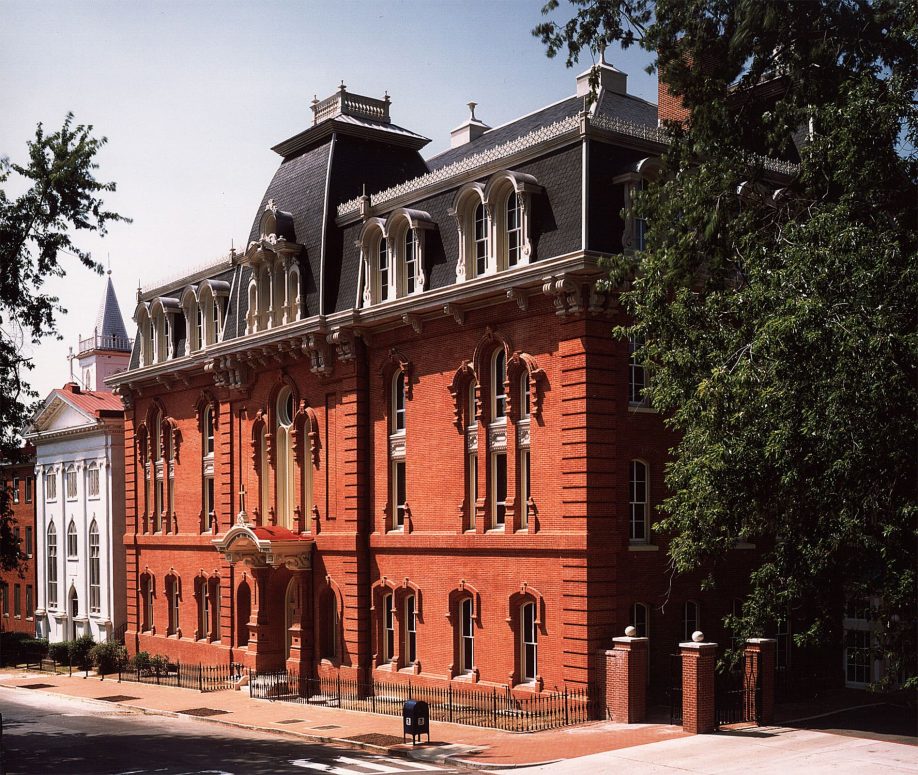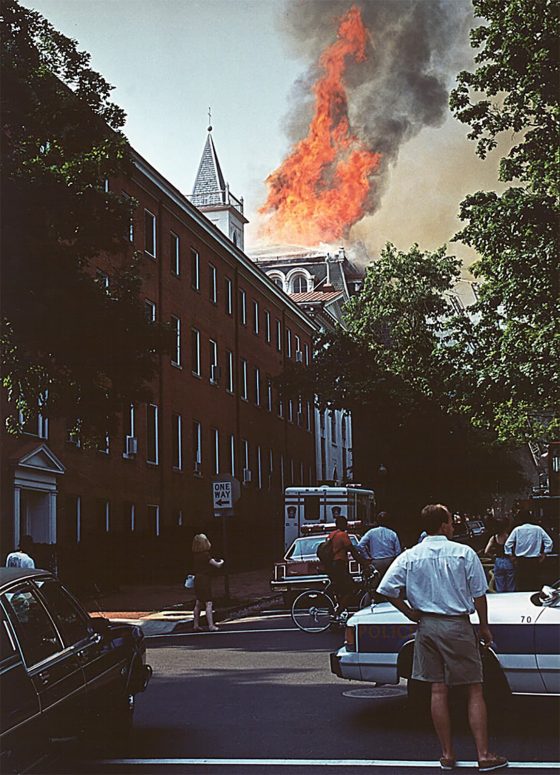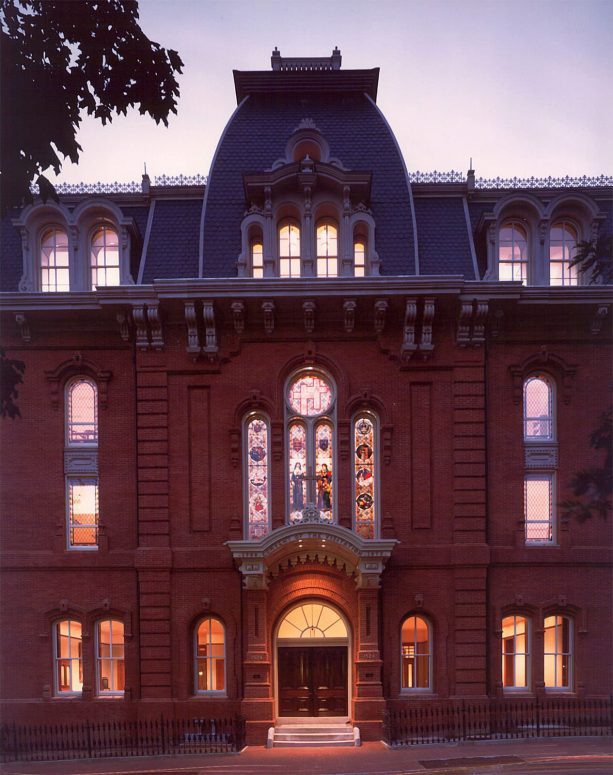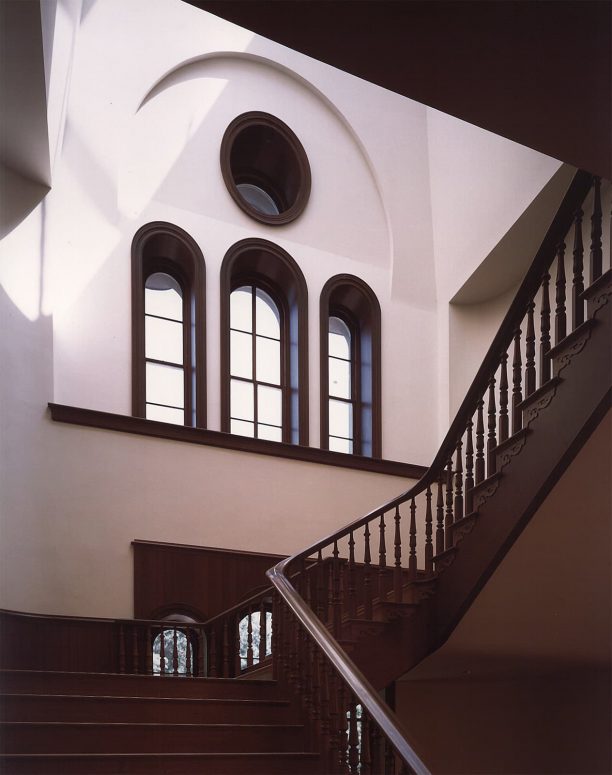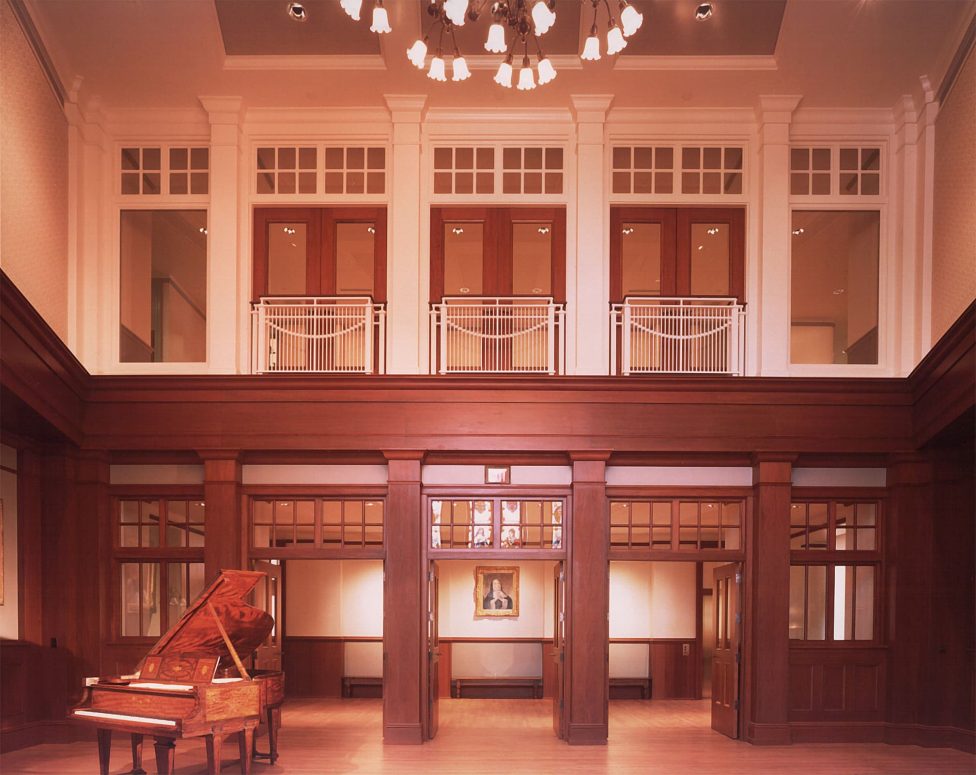Context
Founded in 1799, Georgetown Visitation Preparatory School is the oldest Catholic high school for girls in the United States. In July of 1993, a devastating fire destroyed their ca. 1873, National Register eligible Academy Building, initiating a new chapter in the school’s long history and sparking a close relationship with CGS Architects that has spanned almost thirty years and twelve design and construction initiatives. Throughout the process, the firm has redefined Visitation’s campus and developed multiple facilities that support the school’s embrace of 21st century educational initiatives and collaborative learning paradigms.
Solution
In the immediate aftermath of the fire, the Visitation community embraced the opportunity to re-vision their program and propel the school into a vital future. CGS Architects resurrected the Victorian National Landmark building within its salvaged exterior masonry walls, achieving a balance between preserving the historic façade and implementing modern interior spaces. The first floor features a replication of the original reception parlors while the upper floors house new classrooms, administrative office and gathering spaces. On May 5, 1995, the building was rededicated as Founders Hall. Following the accelerated reconstruction process, CGS Architects developed a new campus master plan as a roadmap for incremental growth and change. Significantly, the firm envisioned a new campus core that quickly became the identifiable heart of the school community – space that facilitates passage and the casual interactions that nurture connections and strengthen relationships. Subsequent projects included the adaptive re-use of existing facilities to create a chapel / performing arts venue and a new physical education building that reinforces the “urban” edge and defines space for outdoor gathering. The newest building initiative promotes the school’s emphasis on convergent STEM disciplines by adding new laboratory / science learning spaces and fine arts studios. In addition, a new student-commons forms the “watering hole” between a ca. 1950’s classroom building and existing library structure to support social learning and create a venue for engagement and connection.
